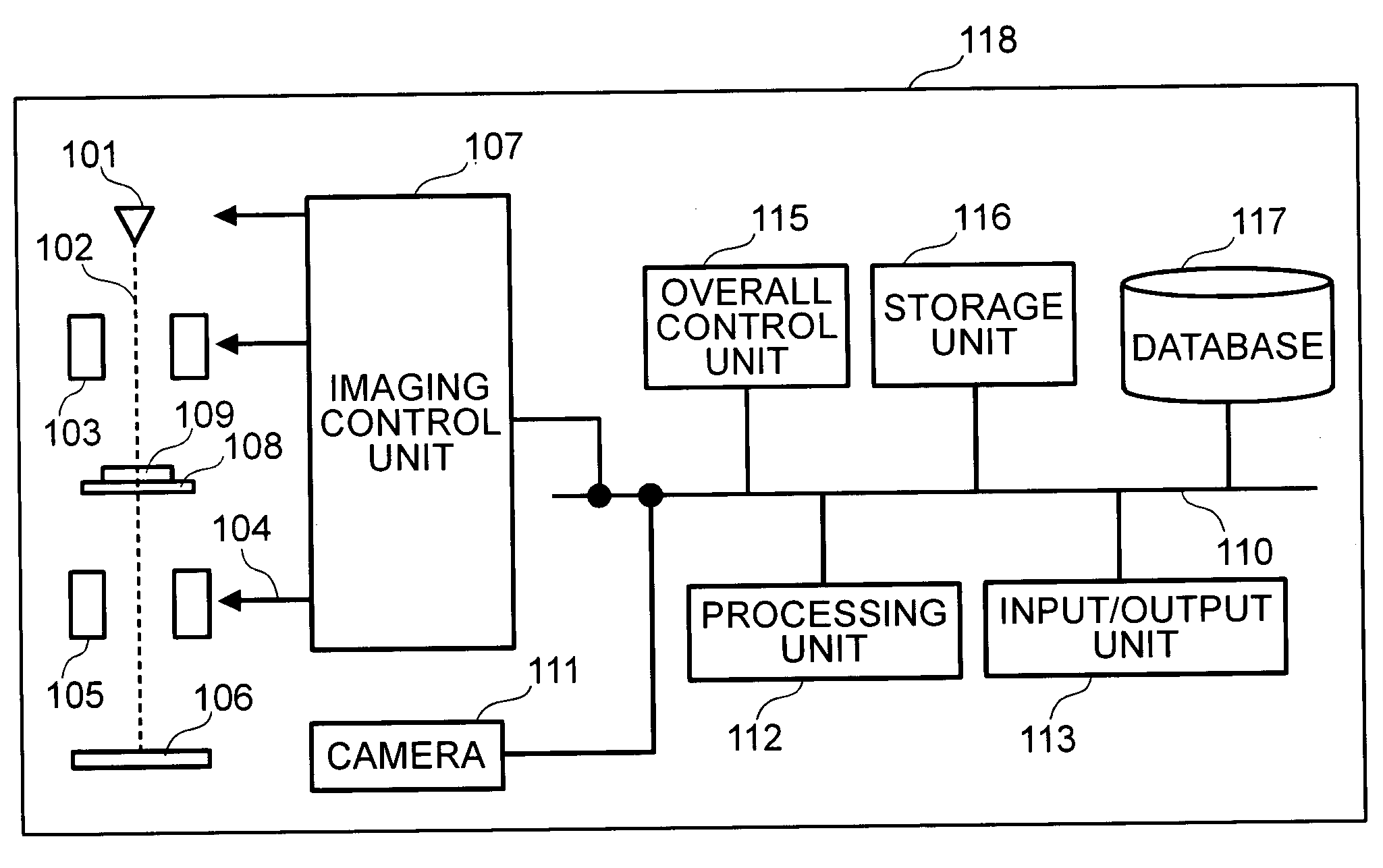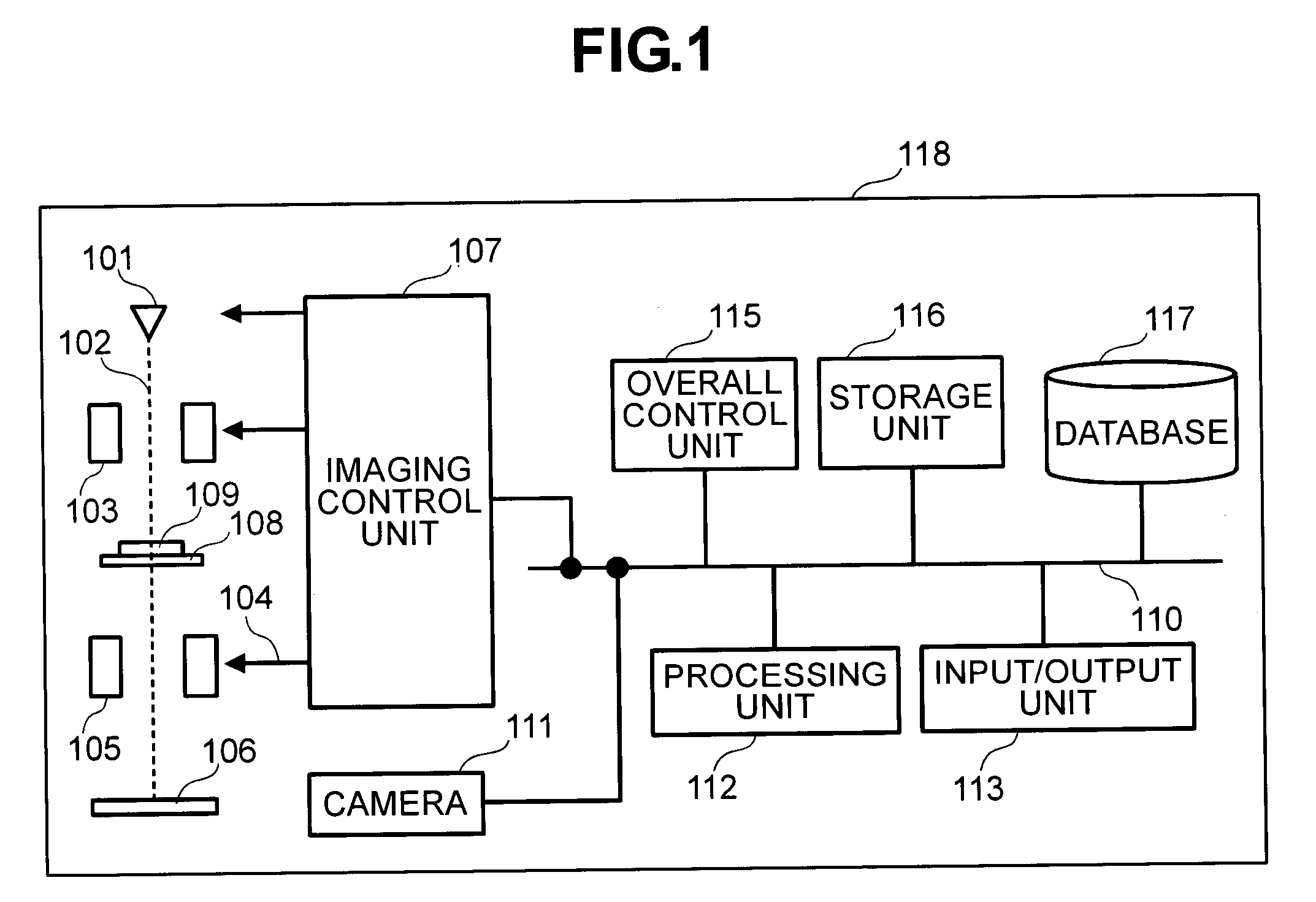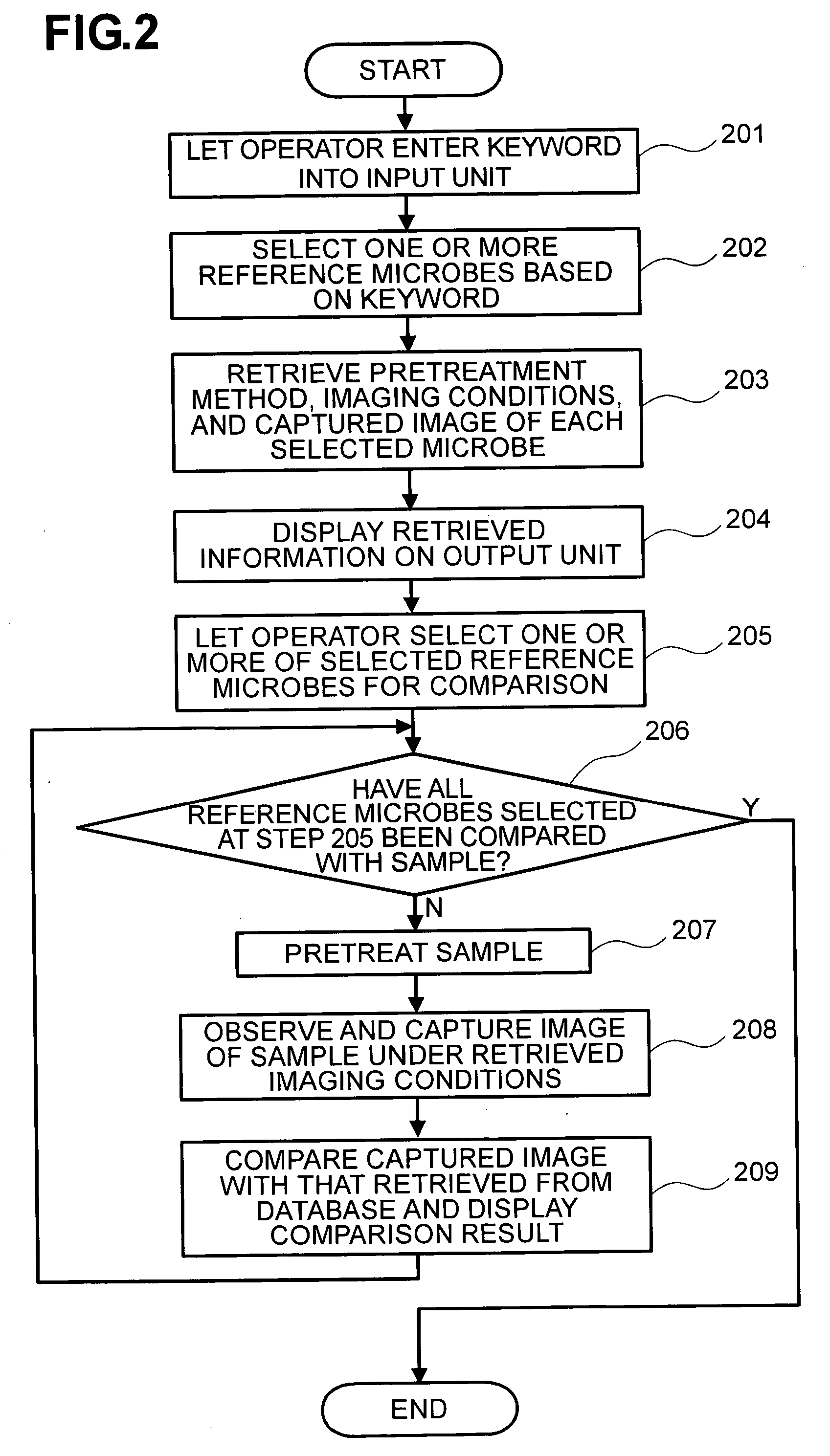Transmission electron microscope system and method of inspecting a specimen using the same
a technology of electron microscope and electron microscope, which is applied in the direction of material analysis using wave/particle radiation, instruments, nuclear engineering, etc., can solve the problems of requiring substantial time and labor, requiring manual searching a huge amount of past microorganism data, and low image contrast, so as to achieve the effect of easy determination
- Summary
- Abstract
- Description
- Claims
- Application Information
AI Technical Summary
Benefits of technology
Problems solved by technology
Method used
Image
Examples
Embodiment Construction
[0030] Preferred embodiments of the present invention will be described below.
[0031]FIG. 1 shows a transmission electron microscope system 118 according to the present invention. The system 118 comprises: an imaging system; an input / output unit 113 for inputting and outputting data; a processing unit 112 for processing image data; a storage unit 116 for storing processing results, etc.; a database 117 for providing reference data used to identify an imaged microscopic thing; an overall control unit 115 for controlling the operation of each unit; and an internal bus 110 for interconnecting each unit. The imaging system includes an electron gun 101, an irradiation lens 103, an objective lens 104, an imaging lens 105, a fluorescent screen 106, an imaging control unit 107, a mesh 108 on which a specimen 109 to be observed is mounted, and a camera 111.
[0032] The present system (118) captures an image in the same manner as an ordinary transmission electron microscope. Specifically, the ...
PUM
| Property | Measurement | Unit |
|---|---|---|
| transmission electron microscope | aaaaa | aaaaa |
| size | aaaaa | aaaaa |
| shape | aaaaa | aaaaa |
Abstract
Description
Claims
Application Information
 Login to View More
Login to View More - R&D
- Intellectual Property
- Life Sciences
- Materials
- Tech Scout
- Unparalleled Data Quality
- Higher Quality Content
- 60% Fewer Hallucinations
Browse by: Latest US Patents, China's latest patents, Technical Efficacy Thesaurus, Application Domain, Technology Topic, Popular Technical Reports.
© 2025 PatSnap. All rights reserved.Legal|Privacy policy|Modern Slavery Act Transparency Statement|Sitemap|About US| Contact US: help@patsnap.com



